Facts & Information
- 1/4 of all clean water that enters your home is used to flush toilets
- One toilet flush require 3 gallons of clean treated water
- A single load of laundry equals 40 gallons of clean water
- A ten minute shower requires 50 gallons of clean water
- Brushing teeth with the tap running requires 4 gallons
- Your body is 60% water, your brain is 70% water and your blood, 80%
- You can live without food for a month but your body cannot survive one week without clean water
- 3% of the planet earth is fresh water and most is in the form of ice
- Less than 1% of fresh water is accessible for human use
- The Yukon is a high user of clean water
The City of Whitehorse, as part of its Permit to Operate a Large Public Drinking Water System, collects weekly water samples for residual chlorine and temperature from 28 stations across the water distribution system, as well as samples for independent bacteriological analysis. In addition, water samples are collected two times per year at the Selkirk Pumphouse (after chlorination), for general chemistry and metals. The following table presents the latest results:
| Parameters | Units | MAC GCDWQ | Treated Water Selkirk Pumphouse 18-Jul-2023 |
| Conductivity | µS/cm | 390 | |
| Bicarbonate (HCO3) | mg/L | 139 | |
| Carbonate (CO3) | mg/L | <1.0 | |
| Alkalinity (Total as CaCO3) | mg/L | 139 | |
| pH | pH units | 6.5-8.5 | 8.29 |
| Total Dissolved Solids | mg/L | 500 | 244 |
| Turbidity | NTU | <0.10 | |
| Fluoride | mg/L | 1.5 | 0.138 |
| Sulphate | mg/L | 61.4 | |
| Arsenic | mg/L | 0.01 | 0.00370 |
| Calcium | mg/L | 29.8 | |
| Copper | mg/L | 1 | 0.00202 |
| Lead | mg/L | 0.01 | 0.000050 |
| Magnesium | mg/L | 26.7 | |
| Manganese | mg/L | 0.05 | 0.00111 |
| Sodium | mg/L | 200 | 12.9 |
| Zinc | mg/L | 5 | 0.0062 |
| Hardness | mg/L | 183.9 |
Click here to view historical information (2013).
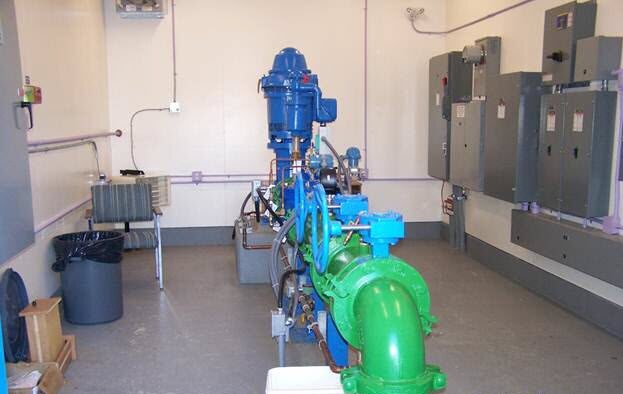
This water well house pump pulls water from the aquifer 20 metres underground.
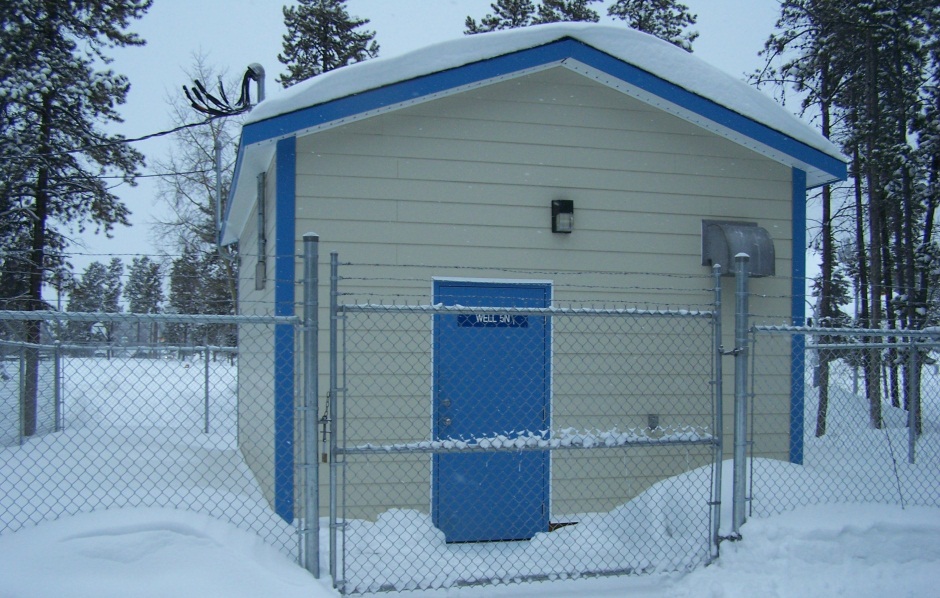
A City of Whitehorse well house.
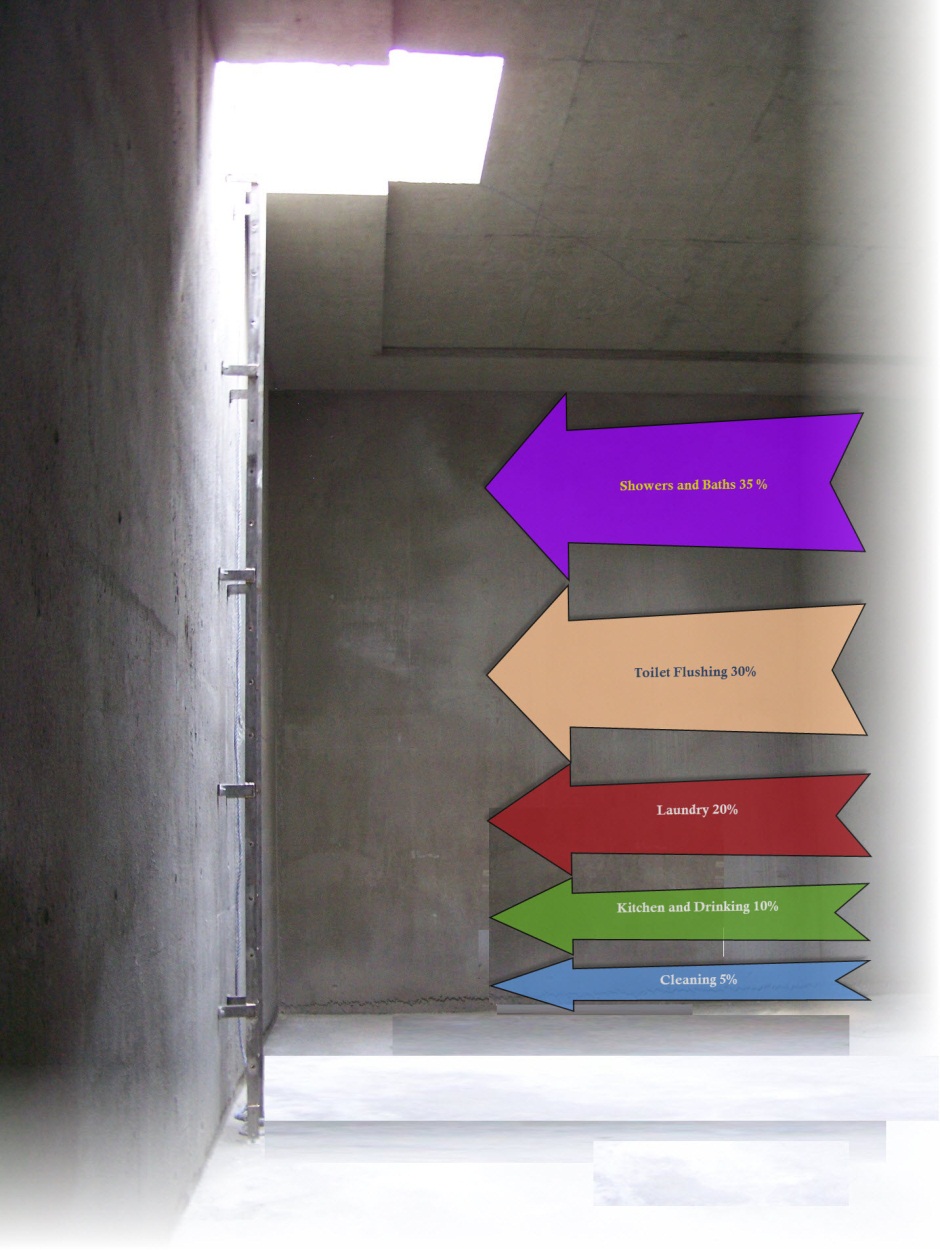
This is the interior of a newly constructed water reservoir. The coloured arrows represent the level of the reservoir if it was full of clean potable water and the amount for each of the identified uses.
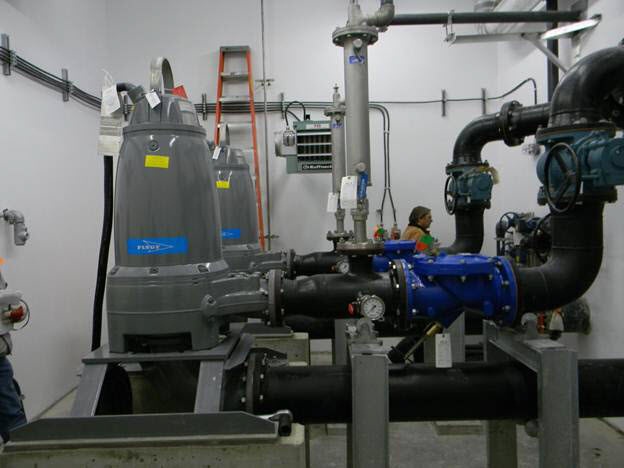
This is the lift station where waste is pumped to the treatment lagoons.
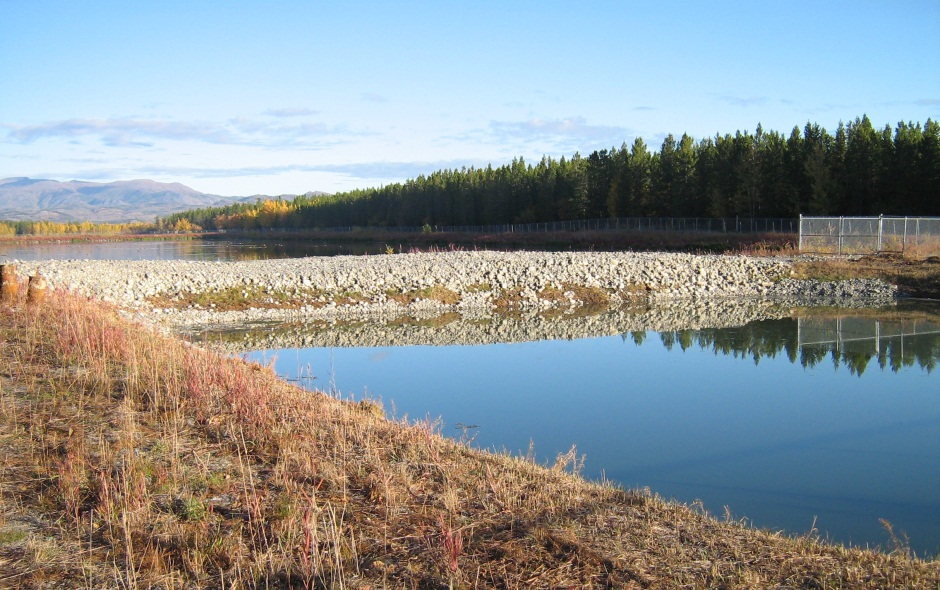
One of the City’s treatment lagoons.
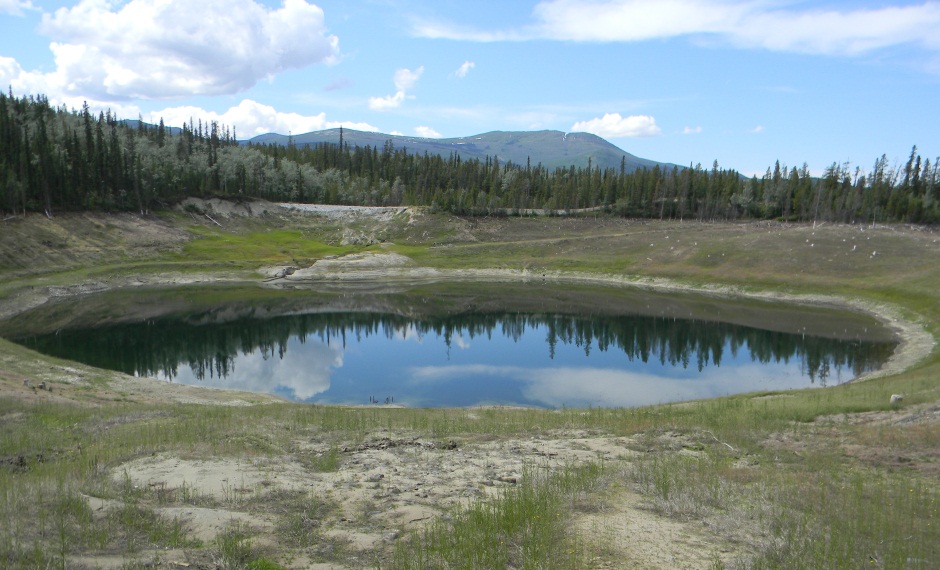
Another treatment lagoon which looks just like a normal lake.
- State of water and sewer infrastructure
- Long-term water supply availability
- Financing for capital improvements
- Public understanding of the value of water resources
- Public understanding of the value of water systems and services
Don’t Sink Your Grease
When fats, oil, and grease go down the drain, they can cause a lot of problems in home, business, and City sewer systems. This greasy waste may appear to go down the drain, but it hardens as it moves through the pipes, clogging drain pipes, reducing plumbing flow, creating odours, and even sewer backups and floods. Sinking your grease can cost time and money.
Where does fat, oil and grease come from?
Common sources of grease are meats, fats, lards, cooking oil, shortening, butter and margarine, sauces, and salad dressings.
What can you do with fat, oil and grease?
- Pour grease into a jar, tin can, or coffee mug and let it harden. Hardened grease is easily scraped out, and can be placed in your compost cart.
- Wipe fats, oil, and grease off cooking equipment with a paper towel before washing.
- Scrape all dishes into compost bin before washing.
Businesses in the Food Industry
The City of Whitehorse Sewer and Storm Bylaw requires all commercial, industrial, and institutional food facilities to dispose of fats, oils, and grease properly, and to install and maintain a proper grease interceptor (grease trap) to appropriate plumbing fixtures.
